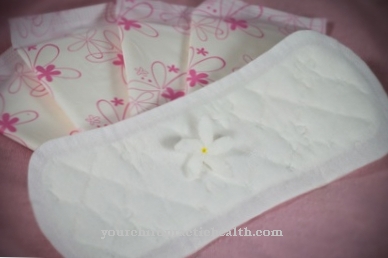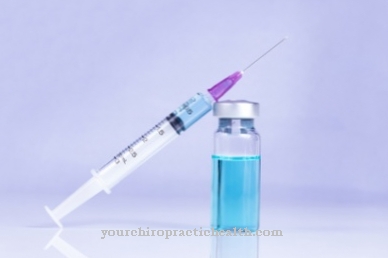As Puerperium the doctor describes the first few weeks after the birth. At that time, the focus is on relaxation, the relationship between parent and child, and breastfeeding. During these six to eight weeks, the body switches to the so-called “non-pregnant mode”. The hormonal balance is changed, weight is reduced and birth injuries are healed. It is important that the woman does not exert herself and take over during this time.
What does puerperium mean?
The Puerperium stands for the first eight weeks after the birth. It is the time when the mother's body recovers from the rigors of childbirth. The greatest change takes place within the first ten days after the birth process. The uterus recedes, the concentration of hormones, which was extremely high during pregnancy, drops to its normal state.
Of course, there are also after-pains that sometimes cause pain; the weekly flow is also quite strong. Especially with the first child, the feeling of being a mother now is especially strange. The mother first has to find her new role. This is exactly why the mother (and also the father) need rest.
The woman needs time and rest so that the uterus can recede or the milk flow is activated. Above all, it is also the cuddling hours with the baby that should be enjoyed.
Regeneration of body & soul - what happens in the body?
The first days after the birth process shape the woman's soul. This is also because the hormones change. The women are more sensitive, sometimes also sad more quickly. "Howling days" are not uncommon at the beginning of the puerperium. Sometimes the "soul can derail". In many cases, women even need professional help when the “baby blues” strikes.
Depression is not uncommon. Sometimes the women are extremely anxious, behave passively and appear "cold". It is important that the partner is there to provide support. Of course, the delivery itself can also take care of the baby blues. For example, when the birth was different from what the mother had dreamed of for months. Complications, a caesarean section - all factors that favor the baby blues and ensure that the woman's depression is pronounced.
After the placenta has become detached in the woman's uterus, a wound is created at that point. It can take several weeks for the wound to heal completely. At that time the weekly river, also known as Lochien, flows. The bleeding is relatively heavy, especially at the beginning of the puerperium.
Clumping is not uncommon. However, over time the blood becomes lighter; after around six weeks the weekly flow is over and the wound dries up. During this time, hygiene is particularly important. Women should therefore rather take a shower than a full bath.
There are - to catch the weekly flow - special inserts that are available in the pharmacy. Those should be changed at regular intervals. Ultimately, those deposits are a breeding ground for germs, so that infections can arise.
Hygiene & gymnastics
Occasionally the weekly flow congestion - a rare complication - can occur. In that case, the uterus regresses slowly. In most cases, women complain of back pain and abdominal pain; the weekly flow dries up completely or changes its smell.
Sitz baths and massages can help release the congestion. However, if the weekly flow congestion is not recognized, infections of the uterus follow. The dangerous childbed fever occurs. It is important that regular examinations are carried out by the midwife so that she can check whether the uterus is regressing or not.
After-birth pains are not uncommon - especially if several children have already been born. While the regression of the uterus is not even noticed by primiparous women, women suffer from severe pain who have sometimes given birth to three or four children. However, the after-pains subside after a few days.
Mothers who are breastfeeding usually have no problem with the regression of the uterus. However, if difficulties arise, the woman should preferably lie on her stomach. The pressure on the uterus supports the regression. An ice pack that is placed directly on the stomach can also work wonders.
It is important that the mothers - especially after the first few days - do not overuse themselves. Relaxation and rest are in the foreground; This is the only way to relax the weakened muscles of the pelvic floor. The postnatal exercise should take place around two weeks after the birth.
With light exercises, it is possible that the pelvic floor is strengthened again. There are numerous exercises that can help strengthen your muscles. However, the exercises should not be started too early, otherwise the mother will overexert herself.
Peace for the mother & the family
The puerperium, which lasts between six and eight weeks, is the perfect phase, on the one hand to help your body with the change, and on the other hand to get to know your baby. During this time, the main focus is on your own peace and quiet and the relationship with the child.
It is important that the puerperium is done together with the partner. It is advisable for the fathers to stand by and help the woman to find her way into her “new everyday life”. However, it can take several months for the body to fully recover.






.jpg)










.jpg)







.jpg)


